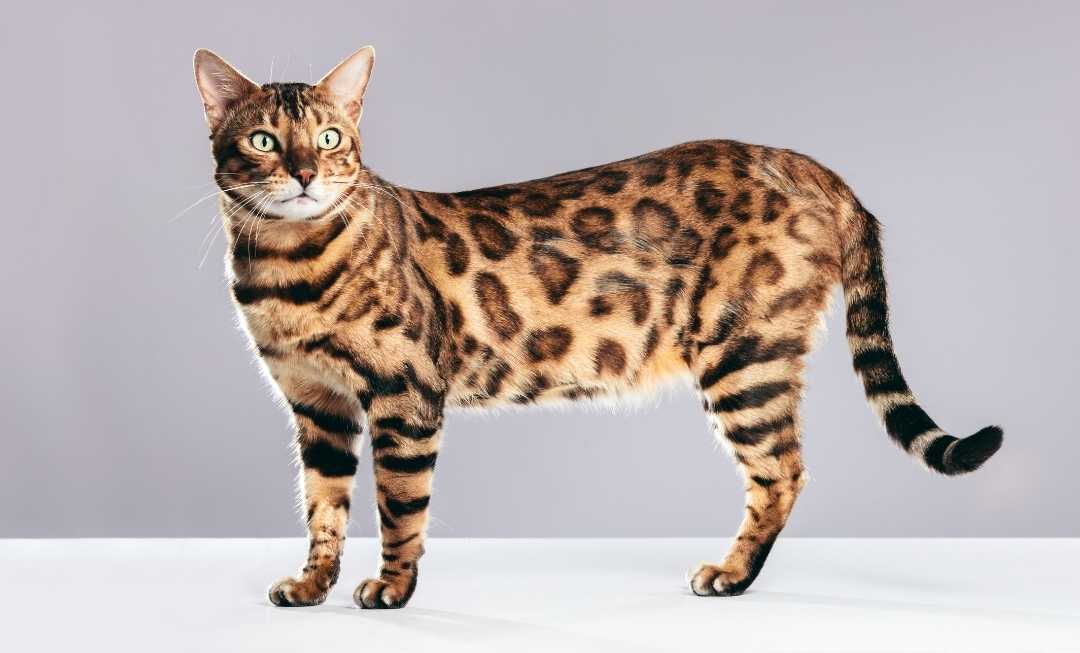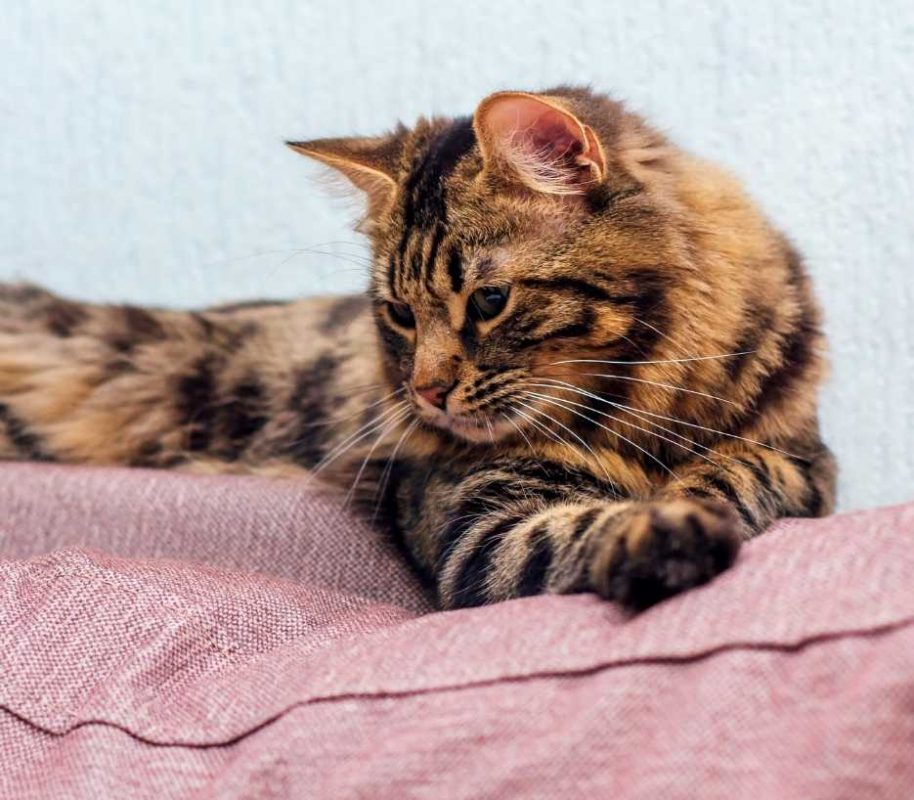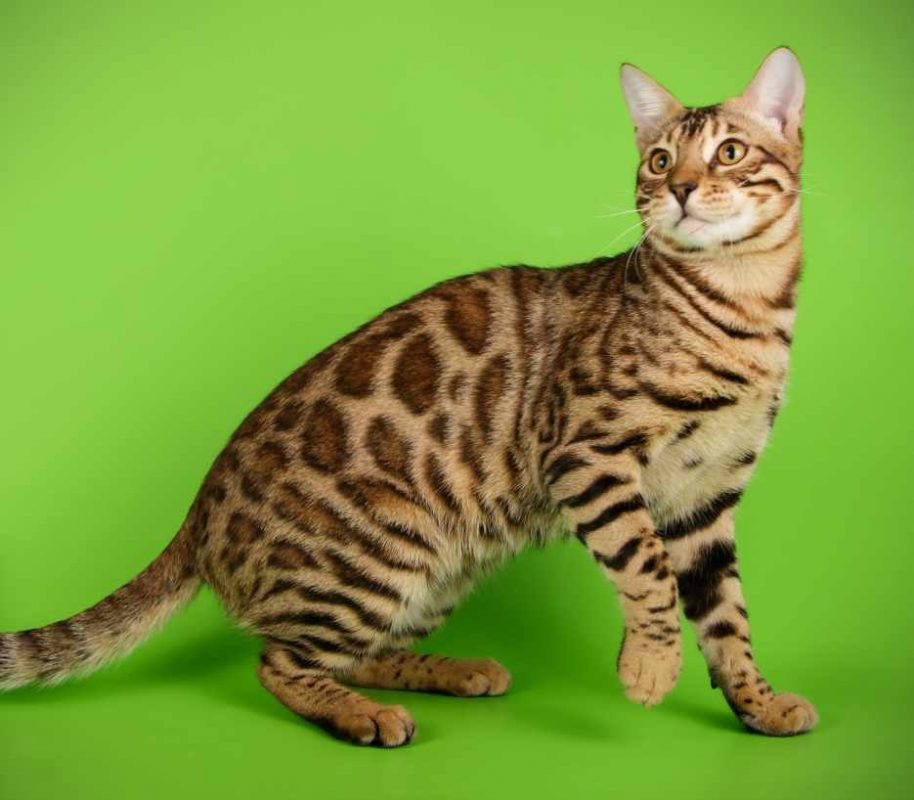
The Bengal cat is not your average house feline. This stunning breed, developed from a combination of Egyptian Mau cats and the wild Asian leopard cat, showcases an exotic appearance and a lively personality. Their name, “Bengal,” comes from the leopard cat’s scientific name, Prionailurus bengalensis. These cats are characterized by their rugged, golden-coated look, displaying beautifully distinct spots, marbling, rosettes, or arrowhead markings. Bengals are known for being highly active and playful, making them a delightful addition to any home that can keep up with their energy levels.
Beginnings
The first mention of crossing an Asian leopard cat with a domestic cat dates back to Harrison Weir’s 1889 book Our Cats and All About Them. Though early breeding attempts were short-lived, Jean Mill later reignited the quest to develop a domestic cat that resembled a wild feline. With a psychology degree from Pomona College and advanced genetics studies at the University of California, Davis, Jean Mill achieved the first intentional cross between an Asian leopard cat and a black California tomcat.
Breeding Success
The Bengal breed truly began to take shape in the 1970s, thanks to Mill’s continued dedication. By 1975, she had acquired a group of Bengal cats bred for genetic testing at Loma Linda University. The breed gained momentum when other breeders joined her efforts. In 1983, The International Cat Association (TICA) officially recognized Bengals, granting them championship status by 1991. Over the years, various cat associations worldwide, including the Governing Council of the Cat Fancy (GCCF), Fédération Internationale Féline (FIFe), and the Cat Fanciers’ Association (CFA), have recognized the Bengal cat, cementing its place in the feline community.
Bengal cats are a delightful bundle of energy, curiosity, and intelligence that captivates anyone fortunate enough to meet them. These playful felines are not just your average house cats; they are known for their remarkable love of engaging in various activities that keep them entertained and stimulated. Whether it’s fetching items tossed by their humans, splashing around in water, or climbing to high vantage points, Bengals have an adventurous spirit that drives their playful antics.
Bengals’ confident and curious natures make them naturally drawn to action and exploration, as they are always on the lookout for their next adventure. Bengals thrive on interaction and socialization, meaning they appreciate spending quality time with their human parent and the company of other pets. Engaging with others allows them to showcase their playful demeanor and vibrant personality, making them a joy in any household. With their unique traits and high energy levels, Bengal cats genuinely enrich the lives of those who welcome them into their homes.

Bengal cats are remarkable and captivating creatures, easily recognized by their large, lean, muscular physique. These felines are impressive in size and possess an array of stunning coat colors that add to their allure. Among these colors, you’ll find Brown Spotted, Seal Lynx Point (often referred to as Snow), Sepia, Silver, and Mink Spotted Tabby, each showcasing the breed’s unique beauty.
What differentiates Bengals from other domestic cats is their exclusive rosette markings. This trait mirrors the spots of wild leopards. These distinctive patterns create an eye-catching appearance that is hard to ignore. Bengals are not just visually striking; their athletic build and energetic nature make them incredibly engaging companions. They are known for their playful personality, intelligence, and curiosity, which can lead to hours of fun and interaction. With their vibrant coats and engaging demeanor, Bengal cats are clearly one of the most visually and emotionally captivating breeds in the feline world.

To keep your Bengal healthy and happy, provide a high-quality diet rich in essential nutrients and protein. After spaying or neutering, monitor their food intake to prevent weight gain. Bengals do well on raw and freeze-dried diets available at many pet stores. Ensure they have access to clean water daily; placing the water bowl away from their food can encourage better hydration. Filtered drinking fountains are a great alternative to traditional water bowls.
Bengals have short hair and shed lightly, so regular grooming is minimal. However, providing chew toys can help maintain their dental health. Trim their nails regularly, and if you have a long-haired Bengal, daily grooming with a brush or comb is necessary.
Bengal Cat Health
A reputable breeder will screen for common health issues like Hypertrophic Cardiomyopathy, Progressive Retinal Atrophy, and PK deficiency. Although Bengals may sometimes be misdiagnosed with Intestinal Bowel Disease, a high-protein diet, and thorough parasite testing can resolve most genuine concerns.
Welcoming a Bengal cat into your home means inviting a world of adventure, beauty, and intelligence. With the proper care and attention, these remarkable cats can become a beloved part of your family.
Unleash the secrets to feline happiness! From picking the purr-fect breed to mastering grooming techniques and choosing the healthiest foods, we’ve got you covered. Get top-notch advice from world-renowned veterinarians, cat behaviorists, and groomers.
🐾 Visit our blog and become the ultimate cat parent! 🐾
Felinopedia is an online cat encyclopedia dedicated to sharing valuable information with (new) cat parents. We aim to help you give your furry friend the best tools and advice for a long, happy, and healthy life.
Join us on this journey to ensure your cat’s wellbeing.
Happy Cats, Happy Life